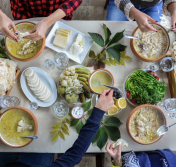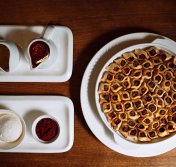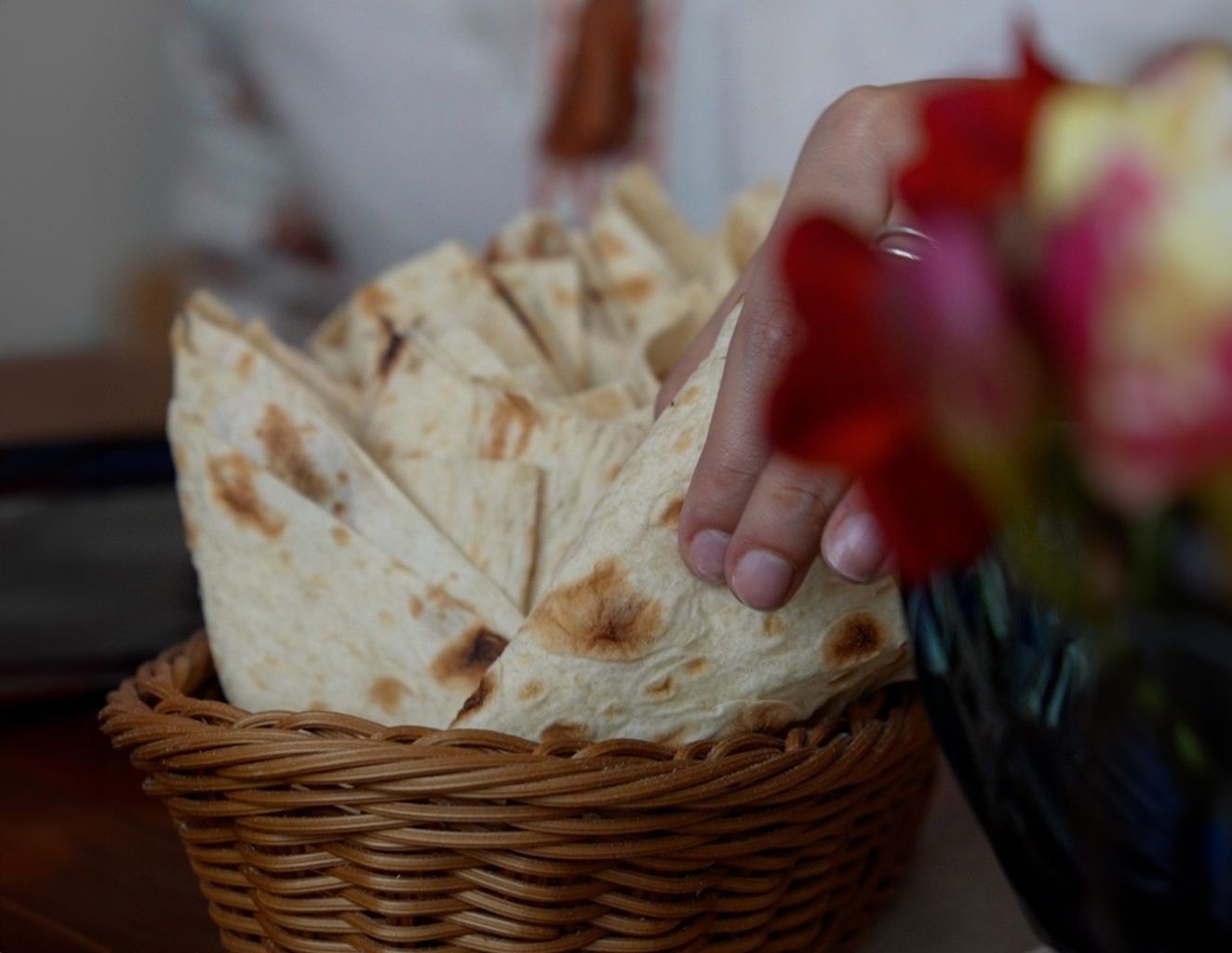 As a sandwich wrap
As a sandwich wrap

This is the most popular way to use and eat lavash bread. Because it’s thin, flat, flexible, and firm, lavash is the perfect bread for a sandwich wrap. In Armenia, wraps are called brduch, and the most popular brduch is a simple cheese and wild edible greens wrap. Thanks to its geographical location and diversity of altitudes, Armenia is home to an incredible variety of especially aromatic herbs, which are packed with nutrients and are one of the foundations of the Armenian kitchen. No meal in Armenia begins without some salty cheese (the most popular types of cheeses you’ll find in food stores in Armenia are Lori and Chanakh) and greens like parsley, coriander, dill, red basil, scallions, and tarragon, all wrapped in lavash. A lot of meals also end with another round of cheese, greens, and bread. That’s how much Armenians love this simple snack.
In broth
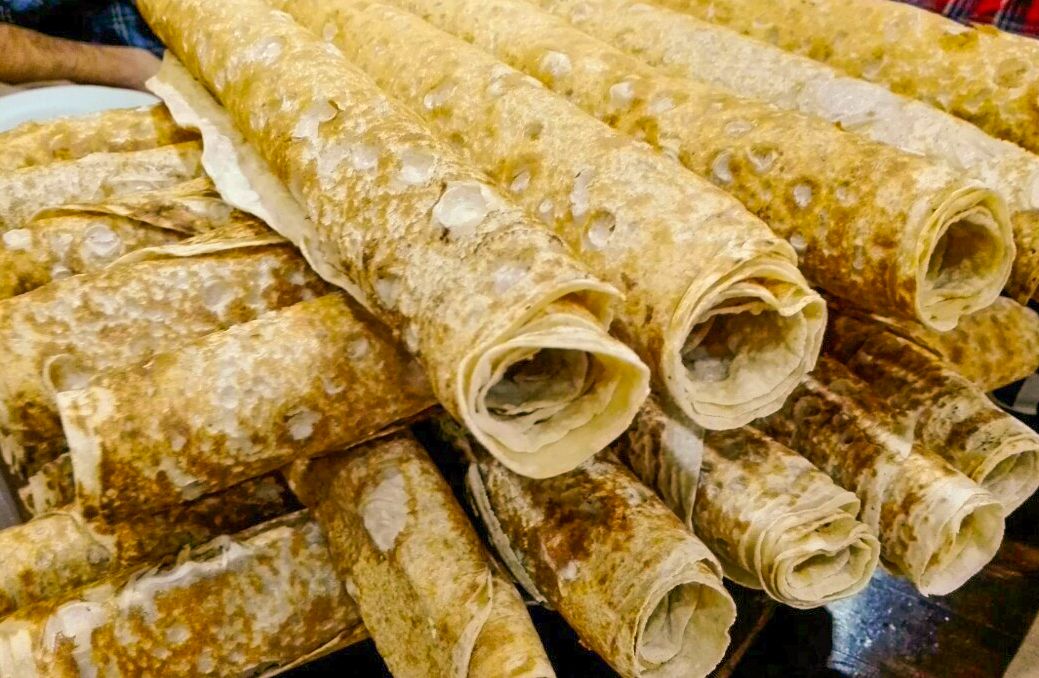
One special property of lavash is that it can be dried and stored for long periods of time. This was traditionally how villagers in Armenia had bread to eat during the winter, when it was too cold to fire up the traditional underground oven. Families would gather and make stacks and stacks of lavash bread to eat in the winter months. To make hard, dry lavash soft again, all one needs to do is sprinkle some water on it.
But dry lavash is frequently added to soup broths to give them flavor, texture, and density. Khash, for example, is a great example of a local soup that’s commonly eaten with loads of dry lavash bread, which is added to a bowl and sucks up all the broth. It may not be visually appetizing, but it sure is tasty. If you don’t know what khash is, definitely read our guide on it before you order a bowl or agree to join a khash party. You should know what you’re getting yourself into.
Lavash is also used in other soupy dishes like kyalagosh, which consists of lentils topped with garlic yogurt and fried onions, and panrkhash, layers of lavash, Armenian string cheese, grilled onions, and oil. You can think of panrkhash as the vegetarian version of khash. For the best kyalagosh and panrkhash in all of Armenia, check out Gwoog Gastrohouse in the city of Gyumri.
As a “bag”
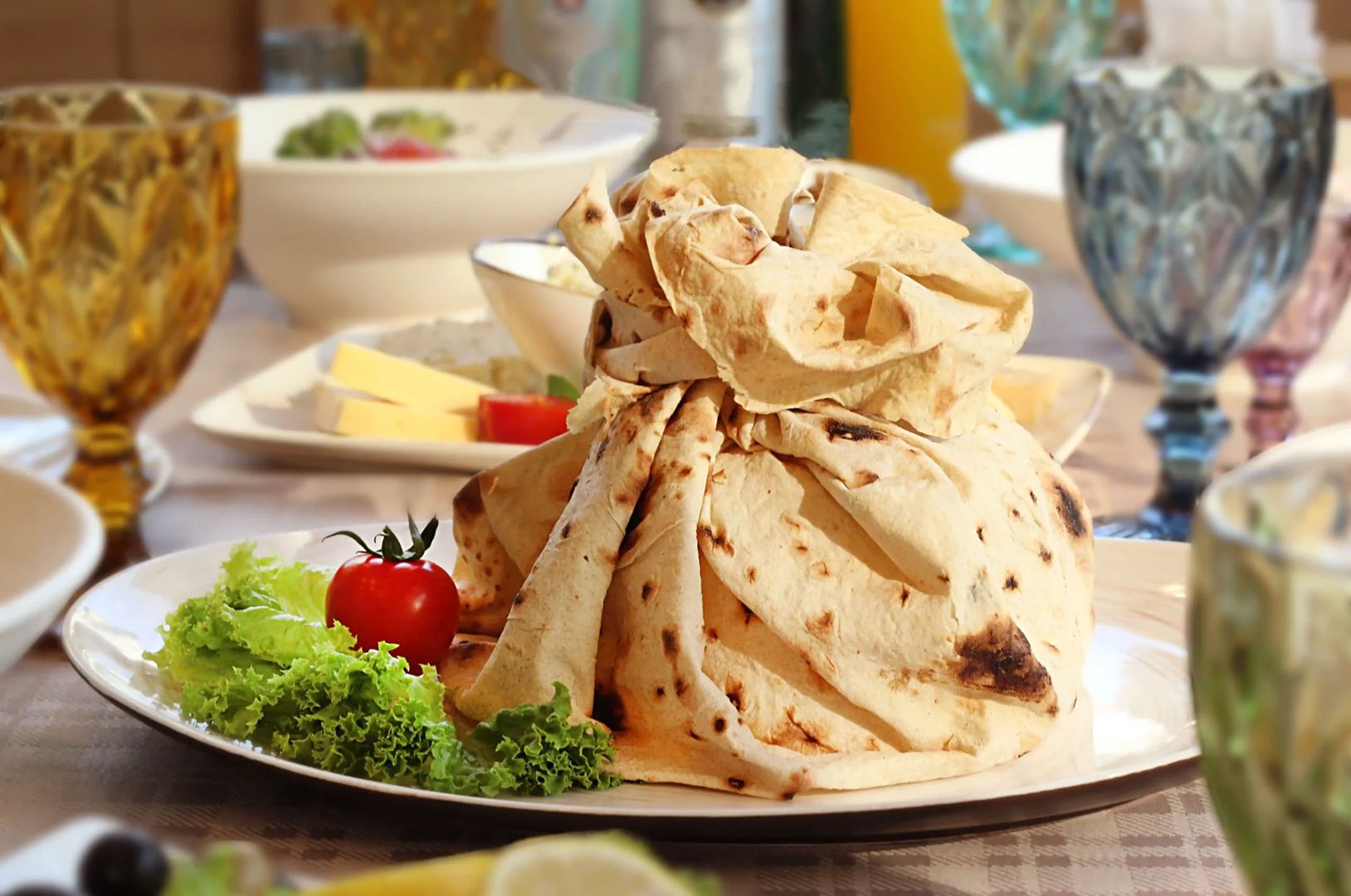
No, Armenians don’t carry bags made of lavash to run their daily errands. But there’s really no other way to describe this unique use of lavash. A khurjin is a traditional bag once used by villagers to transport items. It’s also the name of any dish that’s wrapped in lavash bread.
Imagine a big piece of lavash bread laid flat. Then imagine placing a pile of grilled meats and vegetables (or any solid ingredient, really) in the center of the bread. Then, imagine the corners and edges of the bread wrapping around the ingredients like gift wrapping paper and winding up tightly at the top. This lavash “bag” or khurjin is then placed in the oven to harden before being served. The hardened lavash is then broken up and used like crackers to eat along with the contents of the “bag.”
We don’t know the exact origins of this unique dish, but you can find it in many of the traditional Armenian restaurants in downtown Yerevan.
As chips

Lavash bread is often turned into crunchy square chips. You may have even seen lavash chips in your local food stores in your home country. Sometimes they’re topped with salt and spices for added flavor. Sometimes they’re baked, sometimes they’re fried. But one thing's for sure – lavash chips are a very easy and healthy snack anyone can make. All you need is fresh lavash bread and an oven or fryer. Even if you don’t have an oven or fryer, simply cut the bread into your desired shape and size, and leave out to dry. Very soon, you’ll have a fresh batch of chips. The use of lavash as chips in Armenia may not be traditional, but it’s become very popular in recent years, used as part of amuse bouches and other appetizers with cheeses, meats, and dips.
As a utensil
Of all the ways to use and eat lavash bread, its use as a utensil is probably our favorite. When in Armenia, you can easily skip using a fork and simply use lavash to grab whatever morsel is calling to you. Just be sure to grab the lavash firmly with your fingers, squeezing your palm and fingers inward so that you can easily grab your food, lavash in hand, and not drop anything. You’ll notice local people doing this, especially in situations where formal eating utensils are not always to be found, like at a picnic or outdoor barbecue.
If you want to experience the magic of baking lavash bread, we highly recommend you pay a visit to Tsaghkunk Restaurant and Glkhatun in Tsaghkunk village near Lake Sevan. A glkhatun, literally meaning “head house,” was a traditional structure dedicated to bread baking, and at this restaurant, you can see how lavash is made in a reconstructed, century-old glkhatun, eating it straight out of the oven the local way, with fresh cheeses and wild greens.

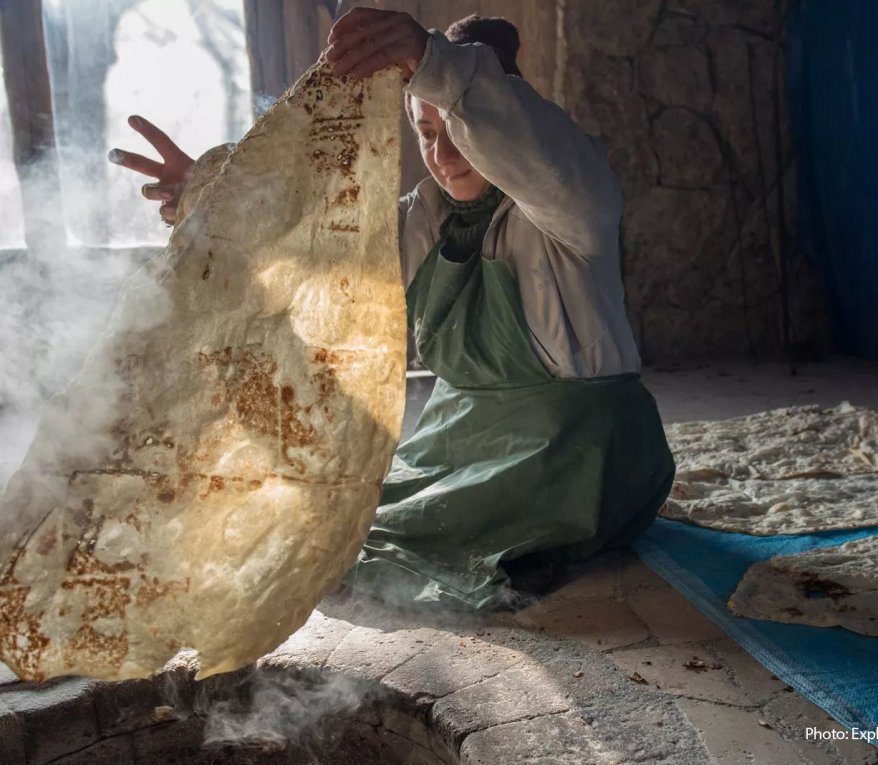

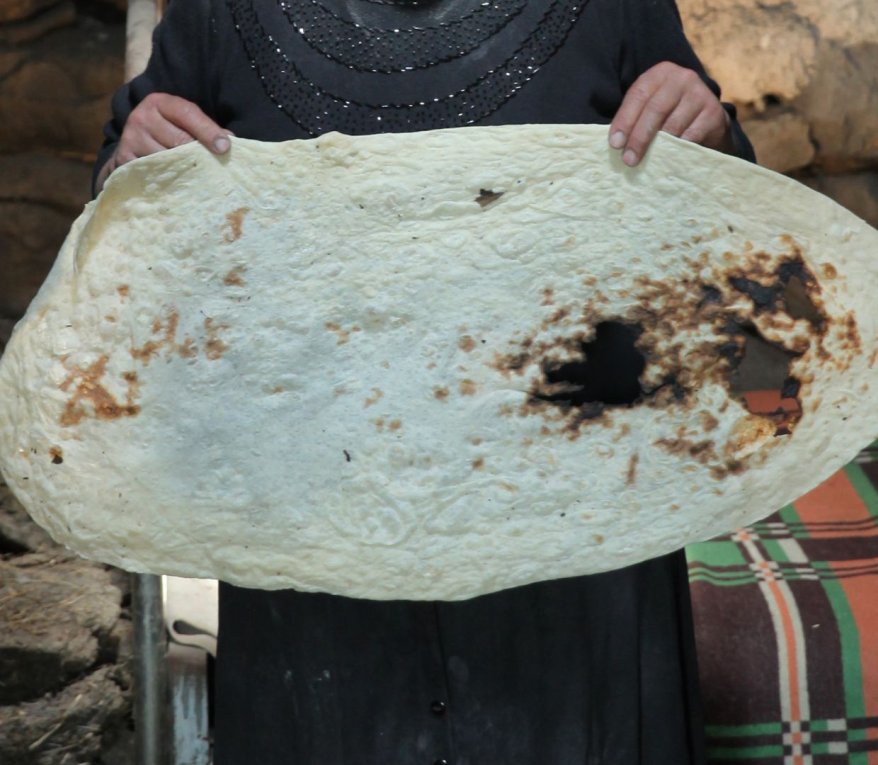
 As a sandwich wrap
As a sandwich wrap



